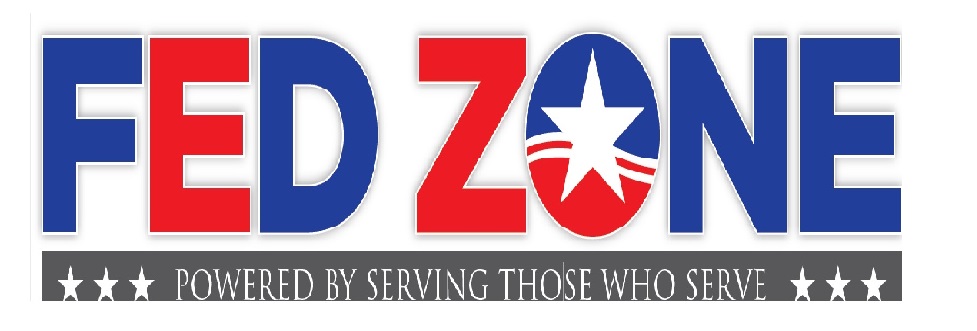On February 23,2022, the IRS released long-awaited regulations on required minimum distributions (RMDs) from IRAs and workplace retirement plans including the Thrift Savings Plan (TSP)

Complimentary Webinar, hosted by Ed Zurdorfer
Edward A. Zurndorfer
On February 23,2022, the IRS released long-awaited regulations on required minimum distributions (RMDs) from IRAs and workplace retirement plans including the Thrift Savings Plan (TSP). Many of the provisions in the new regulations replace current RMD regulations that were issued in 2002 and reflect significant changes made to post-death RMDs by the Setting Every Community Up for Retirement Enhancement (SECURE) Act passed into law in late December 2019.
The regulations are proposed to be effective for designated beneficiaries of inherited IRA accounts and workplace retirement plans whose owners and participants respectively die after Dec. 31, 2021. This is the second of three FEDZONE columns discussing the most important provisions of the new regulations. This column will present the 10-year payment rule for non-eligible designated beneficiaries (non-EDBs) of Roth IRAs and the payout rules for successor beneficiaries of traditional IRAs and retirement plan accounts including the TSP. These payout rules include the 10-year payment rule and the requirement for successor beneficiaries to take RMDs during years 1 through 9 of the 10-year payment period.
The first FEDZONE column in this series discussed who qualify as EDBs. Also presented in the first column was the 10-year payment rule for non-EDBs of traditional IRAs and traditional workplace retirement accounts. Under this rule, the entire traditional IRA or workplace retirement plan account must be emptied within 10 years after the year of the traditional IRA owner’s death or retirement plan participant’s death. The IRS proposed regulations make it clear that the deadline is December 31 of the 10th year following the year of the traditional owner’s or workplace retirement plan participant’s death – not the 10-year anniversary of the date of death.
What surprised many financial professionals is the provision in the SECURE Act requiring non-EDBs of traditional IRA owners and retirement plan participants who died on or after their required beginning date (RBD) to take required minimum distributions (RMDs) during years i through 9 of the 10-year payment period. Any remaining funds in the inherited traditional IRA or workplace retirement plan account has to be withdrawn by the end of year 10.
Non-EDBs of traditional IRA owners and retirement plan account holders who die before their RBD are subject to the 10-year payment rule but not subject to RMDs during years 1 through 9 of the 10-year payout.
The RBD of a traditional IRA owner or a retired workplace retirement plan participant is April 1 following the year the traditional IRA owner or workplace retirement plan participant became age 70.5 if he or she was born before July 1, 1949; and April 1 following the year the traditional IRA owner or workplace retirement plan participant becomes age 72 if he or she was born after June 30, 1949.
The 10-year Payment Rule for Inherited Roth IRAs and Roth Retirement Account Participants
The Roth IRA is the only type of retirement account that is not subject to RMDs. With respect to Roth retirement accounts (including the Roth TSP), because Roth retirement accounts can be transferred with no tax consequences to Roth IRAs, Roth retirement accounts can also avoid RMDs through a transfer to a Roth IRA.
When a Roth IRA owner dies at any age, there are no RMDs during years 1 through 9 under the 10-year payment rule. There is a 10-year payment rule but the non-EDB of a Roth IRA can wait to withdraw all of the inherited IRA funds until the end of the 10th year and not have to pay any federal and state income taxes on the withdrawals. The non-EDB is therefore encouraged to delay their inherited Roth IRA withdrawals as long as possible in order to allow the inherited Roth account to grow tax-free for as long as possible.
The following two examples illustrate:
Example 1. Howard, age 80 and a widower, named his son Phillip age 53 as the non-EDB of his Roth IRA. Howard died in March 2022 with his Roth IRA valued at $125,000. As a Roth IRA owner, Howard is considered to have died before his RBD even though he died after age 70.5 (age 70.5 is Howard’s RBD for traditional IRA and workplace retirement accounts). This means that Phillip does not have to take RMDs. However, Phillip must withdraw his inherited Roth IRA account no later than December 31, 2032. Phillip will owe no federal and state income tax on his inherited Roth IRA withdrawals.
Example 2. Shirley, age 65 and single, named her niece Judy, age 35, as the non-EDB of her Roth IRA. Shirley died in April 2022 with her Roth IRA valued at $74,000. As a Roth IRA owner, Shirley is considered to have died before her RBD. This means that Judy does not have to take RMDs from her inherited Roth IRA account. However, Judy must empty the inherited Roth IRA account no later than December 31, 2032.
Note that a non-EDB does not have to make a withdrawal from an inherited Roth IRA account until the end of the 10th year, allowing for compounded tax-free investment growth of the Roth account during the 10-year period. This may be another reason for federal employees over age 59.5 and federal retirees to consider transferring some of their traditional TSP account to a Roth IRA and/or to convert their traditional IRAs to Roth IRAs. In so doing, they will allow non-EDBs to inherit tax-free accounts. Employees and retirees who may be interested in making such transfers or conversions should discuss with their tax advisors whether they qualify for these transfers/conversions and the tax consequences of performing either or both to the employee or retiree.
Rules for Successor Beneficiaries
A “successor” beneficiary is an individual who inherits an IRA from the original beneficiary of the IRA. Under the SECURE Act, the rule is that a successor beneficiary is also subject to the 10-year payment rule. But the regulations under the SECURE Act make it noticeably clear that the application of the 10-year payment rule will depend on two factors, namely: (1) Whether the original traditional IRA owner or retirement plan participant died before or after his or her RBD; and (2) Whether the original beneficiary is an EDB or a non-EDB. Three different scenarios are presented:
Scenario #1. Original traditional IRA owner or retirement plan participant dies before his or her RBD and the original beneficiary is subject to the 10-year payment rule.
In this scenario: The successor beneficiary is subject to the same 10-year payment rule as the original beneficiary. No RMDs are required in years 1 through 9 of the 10-year payment period.
The following example illustrates:
Example 3. Ken, age 68, dies in January 2022. His traditional IRA original beneficiary is his son, Ralph, age 44. Ralph is a non-EDB bound by the 10-year payment period rule but does not have to take RMDs during years 1 through 9 of the 10-year payment period. Ralph named his oldest daughter June aged 23 as the successor beneficiary. Ralph died in 2024. June is subject to the same 10-year payment rule as Ralph and must empty the inherited traditional IRA no later than December 31, 2032.
Scenario #2. Traditional IRA owner or retirement plan participant dies on or after his or her RBD and the original beneficiary is subject to the 10-year payment rule. In this case, the successor beneficiary will be subject to the same 10-year payment window as the original beneficiary. Annual RMDs are required in years 1 through 9 of the 10-year payment period and the 10-year payout period by both the original beneficiary and the successor beneficiary. Both periods of annual RMDs are calculated based on the life expectancy of the original beneficiary.
The following example illustrates:
Example 4. William, age 86, dies in March 2022. His traditional IRA beneficiary is his daughter Vivian, age 52. Vivian names her daughter Natalie aged 30 as her successor beneficiary. Since William died after his RBD, Vivian is subject to the 10-year payment rule and must take annual RMDs over her life expectancy, starting in the year 2023. Vivian dies in 2026. Natalie continues the same 10-year period and must empty the inherited IRA by December 31, 2032. Natalie must also continue the RMDs in years 5 through 9 (2027-2031) of the 10-year period based on Vivian’s life expectancy.
Scenario #3. Traditional IRA or retirement plan participant dies on or after his or her RBD. Original beneficiary is an EDB who dies thereafter. Successor beneficiary has a 10-year payout period, starting in the year after the EDB dies. Annual RMDs based on the original beneficiary’s life expectancy in years 1 through 9 of the 10-year period must occur, and the entire account must be emptied by the 10th year following the year of the EDB’s death.
The following example illustrates:
Example 5. Jerald, a federal retiree aged 74 with a TSP account, dies in March 2022 and had named his wife Mildred, age 71, as the beneficiary of his TSP account. Mildred is an EDB and can take annual RMDs from her inherited TSP account over her life expectancy. Mildred named her son, Frank, as her successor beneficiary of her beneficiary TSP account. Mildred dies in 2024. As a successor beneficiary, Frank is subject to the 10-year payment rule. Once he transfers his inherited TSP account to an inherited traditional IRA, Frank must empty the inherited IRA account no later than December 31,2034 and pay full federal and state income taxes on the withdrawals.. During the 10-year payment period Frank must take annual RMDs in years 1 through 9 based on his mother’s Mildred’s life expectancy.
Edward A. Zurndorfer is a CERTIFIED FINANCIAL PLANNER™ professional, Chartered Life Underwriter, Chartered Financial Consultant, Chartered Federal Employee Benefits Consultant, Certified Employees Benefits Specialist and IRS Enrolled Agent in Silver Spring, MD. Tax planning, Federal employee benefits, retirement and insurance consulting services offered through EZ Accounting and Financial Services, and EZ Federal Benefits Seminars, located at 833 Bromley Street – Suite A, Silver Spring, MD 20902-3019 and telephone number 301-681-1652. Raymond James is not affiliated with and does not endorse the opinions or services of Edward A. Zurndorfer or EZ Accounting and Financial Services. The information has been obtained from sources considered to be reliable, but we do not guarantee that the foregoing material is accurate or complete. While we are familiar with the tax provisions of the issues presented herein, as Financial Advisors of RJFS, we are not qualified to render advice on tax or legal matters. You should discuss tax or legal matters with the appropriate professional.

